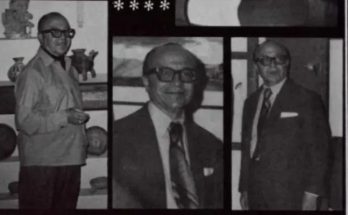By Luis Felipe Rodriguez Palacios
Last week I accompanied my wife and our friend and colleague, Josefina Valle, to the Ignacio Ramírez Market to order a flower arrangement. Walking through the market reminded me of when I accompanied my mother to the old market to buy what was necessary for cooking. Recalling those scenes made me realize that it had been a robbery committed against the merchants and, even more so, against all the people of San Miguel. Although the market indeed needed new roofs, the enormous, carved stone columns were so solid that today they could still adorn some hotel or private ranch where they were moved.
One of the chroniclers of the time spoke of rebuilding the original market with favor, noting that the space was worthy of the equestrian statue of Generalissimo Allende and that the area could hold massive civic events. I believe something different: a beautiful building was destroyed, and the space is useless for civic purposes because it is not large enough. The equestrian statue of Allende could have been placed in another spot. It has been moved to several different locations over the years. Only a very narrow vision imagines that only the center of San Miguel is part of progress.
But the deed has been done, and nothing can bring the old market back. I remember my mother climbing the stairs on the southwest side of that beautiful building with its wide corridors covered with mosaic flooring in red and white. Workers finished the plates in polished cement dyed red. The first fruit stalls were owned by Hilario Téllez and Leonardo González, and there were two groceries, one belonging to the family of Cutberto Espínola and «Los Panchos,» owned by my father-in-law, Don Pancho Téllez. Pepe López had his shoe store; Jesús and his wife Lolita had «Los Tres Diamantes» at the end of the corridor in the corner, and Manuel Retana had two stores. José Luis Bautista, the «Huichol,» remembers that during celebrations such as the ones for the Virgin of Guadalupe, music from the «Swans,» the «Allende Ensemble,» and the «Germans» was performed. There were few electronic devices in those times, and the space was small. People walked through the corridors as they did on Sundays in the main garden.

María de Jesús, daughter of Hilario, reminisces that in front of her father’s store was Don Domingo with the «rod,» then the shoe store and Osuna’s butcher shop. Next came Alfredo Ruiz, and immediately down the aisle, Mr. Baldomero, and later Doña Domitila, Mr. Martín with his delicious jellies, and «Concho» Ceballos with his groceries. To the east was Don José López with his cambayas and the «Chenchas.» In the corridor parallel to Insurgentes Street were Don Socorro, Mariquita, and Don Tomás with their vegetables, followed by Doña Juanita, Lola, and Pachita, whom they called the «soft ones»—I don’t know why. Then came the staircase in front of the College of San Francisco de Sales door.
I had the opportunity to talk with Mrs. Reyes Vargas in the current market. She is a small woman with a good memory who closed her eyes when answering my questions as if to remember better. She recalled a lot since she started working in the market with her mother as a little girl. Next to the blanket stand in one of the corridors, she sold tortillas she brought in a basket; now she works at one of the fondas (small family-run restaurants), and people know her as Doña Reyes Arias. She remembers that her grandmother and her uncles, Úrsula, Jesús, and Goyo, supplied onions, cilantro, and vegetables they took from the garden in the Obraje and that her father and her uncles used the rope for recharging the baskets to stock up the different vegetable stalls.
Beyond the door that led to La Salud were the chocomiles (places selling Mexican milk chocolate), «El Pingüino,» owned by Doña Teófila; then Don Narciso, who sold fruit; then the haberdashery «El Refugio,» owned by Don Salvador Soria; along with Toñita and Chuchita, who came from Comonfort and sold vegetables. Parallel to Calle Colegio were the Muñiz, Don Julio, and Don Gabino grocery stores and then Don Odilón Rojas’s vegetables. There was a door in the middle of that corridor where tenants used the water faucet. Many other stalls and the Muñiz butcher shop were nearby, and coffee with milk and bread were available to buy.




